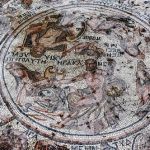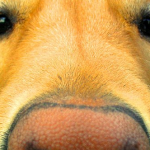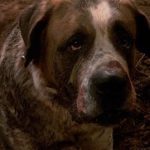 Mysteries
Mysteries  Mysteries
Mysteries  Creepy
Creepy 10 Scary Tales from the Middle Ages That’ll Keep You up at Night
 Humans
Humans 10 One-of-a-kind People the World Said Goodbye to in July 2024
 Movies and TV
Movies and TV 10 Holiday Movies Released at Odd Times of the Year
 Politics
Politics 10 Countries Where Religion and Politics Are Inseparable
 Weird Stuff
Weird Stuff 10 Freaky Times When Famous Body Parts Were Stolen
 Miscellaneous
Miscellaneous 10 Interesting Things Manufacturers Stopped Making and Why
 Gaming
Gaming 10 Funny Tutorials in Games
 History
History 10 Fascinating Little-Known Events in Mexican History
 Facts
Facts 10 Things You May Not Know about the Statue of Liberty
 Mysteries
Mysteries 10 Devastating Missing Child Cases That Remain Unsolved
 Creepy
Creepy 10 Scary Tales from the Middle Ages That’ll Keep You up at Night
 Humans
Humans 10 One-of-a-kind People the World Said Goodbye to in July 2024
Who's Behind Listverse?

Jamie Frater
Head Editor
Jamie founded Listverse due to an insatiable desire to share fascinating, obscure, and bizarre facts. He has been a guest speaker on numerous national radio and television stations and is a five time published author.
More About Us Movies and TV
Movies and TV 10 Holiday Movies Released at Odd Times of the Year
 Politics
Politics 10 Countries Where Religion and Politics Are Inseparable
 Weird Stuff
Weird Stuff 10 Freaky Times When Famous Body Parts Were Stolen
 Miscellaneous
Miscellaneous 10 Interesting Things Manufacturers Stopped Making and Why
 Gaming
Gaming 10 Funny Tutorials in Games
 History
History 10 Fascinating Little-Known Events in Mexican History
 Facts
Facts 10 Things You May Not Know about the Statue of Liberty
10 Amazing Archeological Discoveries Made by Dogs
Dogs have been man’s best friend for thousands of years. It is easy to see why. They are smart, loyal, funny, and friendly. They also make great companions, protectors, hunters, and… archaeologists?
Apparently, some dogs are born with a hidden desire to explore the past. This has led to some incredible archeological finds by dogs. Some were intentional, some were luck, and some were just the dog being a clumsy doofus. Here are 10 amazing archeological discoveries made by dogs.
Related: Top 10 Incredible Pieces Of Archaeology Pulled From The Trash
10 Lascaux Cave
In 1940, young Marcel Ravidat was out walking his dog, Robot, in the German-occupied French countryside. The boy and his dog were enjoying their stroll when Marcel noticed he could no longer see Robot. He called out for his beloved dog and heard muffled barks nearby. Marcel followed these sounds to find they were coming from a narrow, 50-foot (15-meter) shaft leading underground.
Marcel entered the shaft to rescue his dog but was stunned when his oil lamp revealed he was in a huge cave with animal artwork all over the walls. Marcel and Robot had accidentally re-discovered the ancient Lascaux Cave.
Lascaux Cave is one of the most significant discoveries in both history and art. Its paintings are over 17,000 years old, making them some of the oldest known artwork made by humans. Today, scientists continue to study the cave and its artwork while also looking at new methods to preserve these priceless remnants of our early ancestors. And no one would have ever even known they were there, were it not for a young French boy and his clumsy dog who literally fell into this amazing discovery.[1]
9 Dinosaur Skeleton
Tracy Barclay was walking with a group of friends and her dog, Raffle, on a beach in Dorset, England. Tracy was tired and sat down with her dog while the rest of the group kept walking. After resting for a bit, Raffle suddenly leaped to his feet and began clawing at the sand nearby. Tracy walked over to look at what had grabbed the dog’s attention. She was expecting to find a stick or some other common object.
What she found instead was a massive backbone. Tracy fell to her knees and joined her dog in digging in the sand. She uncovered flipper bones, and that is when she knew what she had found: a plesiosaur skeleton.
Tracy alerted her husband, who was an avid fossil collector, and he confirmed what it was. They, in turn, notified the local authorities. After 16 years of painstaking work extracting, cleaning, and assembling the bones, the 200-million-year-old skeleton was put on display at the Charmouth Heritage Coast Centre. In honor of the curious pooch who first discovered it, the plesiosaur skeleton was named Raffle.[2]
8 The Largest Treasure Found in Poland This Century

Kajtuś the dog was walking with his owner near Wałbrzych, Poland, when the dog suddenly began digging in a particular spot. After Kajtuś had been digging for a while, the owner saw an old clay pot in the hole. Upon further examination, it was revealed that the pot was full of coins. And not just any coins: These were coins from the 13th century—medieval bracteates—and were in amazingly good condition.
The Wałbrzych Heritage Protection Officer, who oversaw the collection and cleaning of the coins, said, “The person who approached us was on a walk with their dog. At some point, Kajtuś started digging in the ground. And that is how he came across the pot of coins. At least this is the version presented to us.” They may sound a little skeptical, but it still makes for a doggone good story.[3]
7 Bronze Age Relics
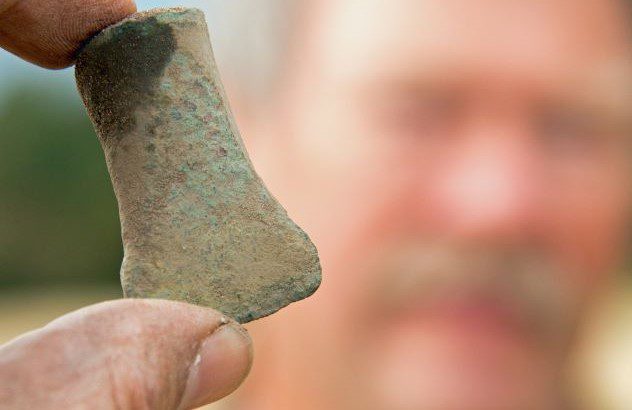
Near the Czech village of Kostelecké Horky, Monty the dog was out walking with his owner Frankota in a field. Monty took an interest in a particular spot and began to dig. It was not long before the owner noticed Monty was digging up rusted metal blades. Fearing for Monty’s safety, Frankota stopped him from digging. But then Frankota noticed that the metal looked quite a bit older than he was expecting. He contacted archaeologists on the off chance he had found something important. This turned out to be a good move.
The archaeologists were amazed to find these rusted metal pieces were actually an extremely rare collection of 3,000-year-old sickle and axe blades, bracelets, and spear points. As a reward for finding this ancient treasure, Frankota was given $360. There is no word on if he used any of that money to buy Monty a big, juicy steak.[4]
6 Unmarked Revolutionary War Graves
Cadaver dogs are used by police for the ghoulish but necessary job of sniffing out the location of dead bodies. Archeologists have recently started to wonder just how sensitive their noses are. If they can find bodies of the recently deceased, could they also find bodies from hundreds of years ago?
Cadaver dogs were brought to Kettle Creek, Georgia, in the USA, to test this theory. Kettle Creek was the site of a major battle between American and British forces during the Revolutionary War. Surprisingly, the cadaver dogs managed to find more than two dozen shallow graves from the 240-year-old battle. The dogs’ finds were confirmed with ground-penetrating radar and partial excavation. As a result, the battlefield received federal funds for expansion and preservation. And they also owe a debt of gratitude to the dogs and their amazing noses.[5]
5 3,000-Year-Old Croatian Tombs
If you thought it was incredible that dogs could sniff out graves from more than two centuries ago, how about tombs from three millennia ago? Vedrana Glavaš is a professor of archaeology in Croatia who was excavating a site from 800 BC.
She had already found a few tombs when she had an idea. She contacted Andrea Pintar, who trains cadaver dogs, and asked if she could bring some of her dogs to the excavation site. Pintar agreed, arriving with two of her dogs named Sattve and Mali.
Glavaš first wanted to test her theory by seeing if the dogs could locate the already excavated graves. The graves had been filled in and left to sit for several months, so it was no longer obvious where they were. Incredibly, the dogs quickly found them. The next step was to turn the dogs loose on the site.
Sattve and Mali were able to further locate six undiscovered ancient tombs. Glavaš was amazed by how efficient and accurate the pups’ noses were. It begs the question: Just how far into the past can our good boys smell? The idea of using dogs to aid archaeology is gaining favor, so someday we may have an answer.[6]
4 An Ancient Grape-Pressing Site

Zach the dog was playing with his owner Shaul Yona in Jerusalem’s Ramot Forest. Dog and owner were having a good time, running and playing, when Zach suddenly tumbled into a hole in the ground. Yona rushed to the hole and looked down to see Zach was shaken but did not look hurt. Yona reached down and pulled his pooch out of the hole.
While doing so, he noticed the pit Zach had fallen into seemed strange and unnatural. He stuck his head in the hole and realized he was looking into a man-made pit. Archeologists arrived at the site and, after some examination, gave Yona the stunning news. Zach had fallen into an undiscovered grape-pressing pit that dated from the First Temple period (1200-586 BC).
This discovery led to a wider excavation, which uncovered more pits, pottery, and coins from Jerusalem’s distant past. Once that was complete, the mayor of Jerusalem had a biblical garden built on the site. Hopefully, Zach and Yona returned to play in this garden and were no longer worried about falling into any more ancient pits.[7]
7 £6,000 in 19th-Century Gold Coins
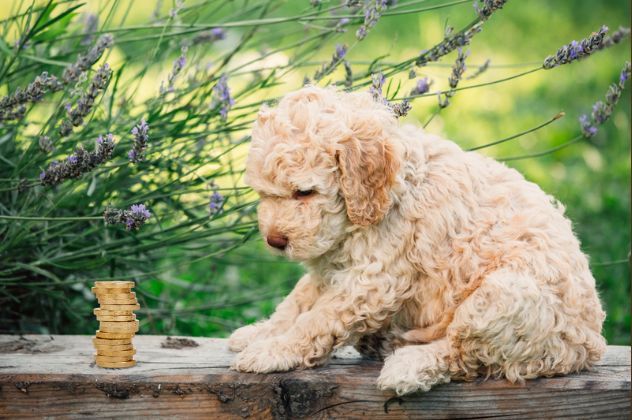
Adam Clark from Blackpool, England, bought a puppy for his daughter. The dog, named Ollie, is a breed of dog called Lagotto Romagnolo. This breed is well-known for digging up truffles. If you cannot figure out where this is going, you have not been paying attention.
On his first walk around the block of his new home, Ollie did what his breed is famous for and started digging in a random location. Ollie ended up unearthing 15 gold coins from the 19th century. Adam collected the coins and took them to a dealer to have them evaluated. The dealer offered to buy the coins from Adam for £5,943.96 (about $7,380 at the time of writing.) Ollie was 10 weeks old when he made his discovery. It appears the puppy is not worried about peaking too early.[8]
2 $90,000 in 14th-Century Silver Coins
It seems a dog in the Czech Republic heard about Ollie’s discovery and said, “I can do better than that!”. And so, the dog Masa from the small village of Usti in the Czech Republic set about one-upping Ollie.
Masa was walking in the woods with her owner when she began to dig. Only a few centimeters below the surface was a small clay pot. Her owner carefully picked up the pot and realized he was looking at a historical artifact. He contacted the local museum. They took the pot from him and found what looked like a few silver coins inside.
They then broke the pot open and were surprised to find that the pot contained 300 silver coins from the 14th century. The coins were valued at over $90,000. Archeologists returned to the site hoping to find more buried history but came up empty. Clearly, these trained professionals should have asked Masa for help.[9]
1 $10 Million in Gold Rush Coins
A dog in California apparently heard about Ollie and Masa and said, “Amateurs!”
John and Mary were out walking their dog on a trail on their rural California property. The dog spotted what looked like an old rusted can sticking out of the ground. John dug it out and noticed it was extremely heavy. He opened it and found it was filled with gold coins. After their disbelief wore off, John and Mary returned to the site with a metal detector. They unearthed eight more cans stuffed with mint-condition, Gold Rush-era gold coins. The collection was appraised as being worth at least $10 million. And since it was found on their property, it all belonged to them (and their dog).
It seems the best investment you can make is not in stocks, real estate, or Bitcoin. Instead, get a treasure-hunting dog and let them do their thing. Just make sure you have plenty of treats on hand to reward these four-legged archeologists for when they strike it rich.[10]


